When thrill-seeking guests pass through the Main Gate at the Magic Kingdom in Walt Disney World, they usually race up Main Street USA and make a bee-line for so-called E-Ticket attractions, such as Space Mountain, Big Thunder Mountain, Splash Mountain or the Seven Dwarfs Mine Train.
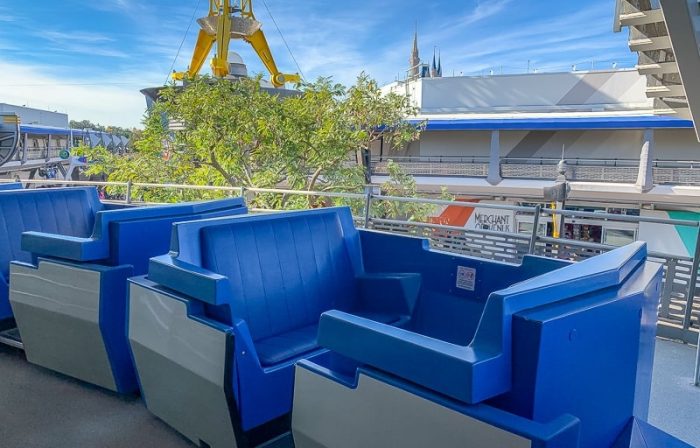
But when it comes to low-tech, low-speed attractions at the Magic Kingdom, there’s one ride that is sure to fulfill one’s desire to sit back, relax and enjoy the scenery: The Tomorrowland Transit Authority PeopleMover.
Whenever we visit the Magic Kingdom, the PeopleMover is a must-do attraction. In an age of high-speed roller coasters, trackless ride systems or state-of-the-art technology, the PeopleMover is resplendent in its simplicity.
There’s usually little or no wait on the queue and you get great views of Tomorrowland, as well as snippets of Fantasyland and Cinderella Castle. And you also get to ride through the heart of Space Mountain and hear the screams of delighted guests careening through the darkened galaxy.
The Tomorrowland Transit Authority PeopleMover has been a WDW Magic Kingdom staple since 1975. The PeopleMover has a track that measures 5,484 feet in length. It takes about 10 minutes to experience what was once deemed a “transportation mode of the future.”

Since the PeopleMover ride vehicles are always moving, you need to step onto a revolving floor, and then gingerly make your way to your ride vehicle. The PeopleMover is an indoor-outdoor attraction … very smooth, never jarring and oh-so-quiet.
During the indoor segments of your 10-minute trip, you’ll see a scale model of Walt Disney’s vision for the prototype community of tomorrow; the aforementioned Space Mountain; a look into a portion of the Buzz Lightyear Space Ranger spin attraction, as well as views of folks browsing the merchandise in Star Traders.
When outdoors, a covering keeps you dry during Florida’s rainstorms. You’ll catch glimpses of the Tomorrowland Speedway, the exterior of Space Mountain, the still-under-construction Tron Light Cycles, the Carousel of Progress entrance and the magnificent Cinderella Castle.
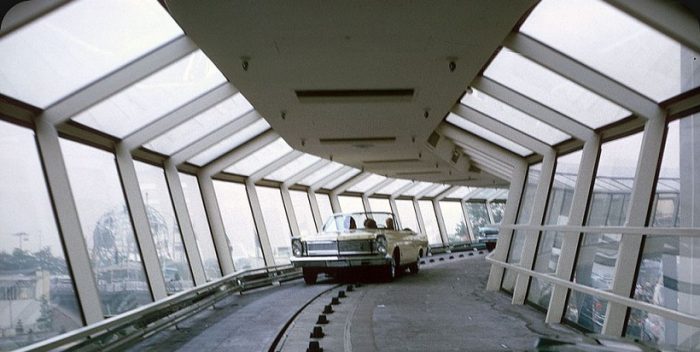
The roots of the PeopleMover can be traced back to the development of the Ford Magic Skyway at the 1964-1965 New York World’s Fair. That’s when the creative minds at WED Enterprises [the forerunner of Walt Disney Imagineering] were tasked with devising a ride system that would transport actual Ford Motor Company vehicles through the massive Magic Skyway show building at the World’s Fair site in the New York City borough of Queens.
Disney Legend Bob Gurr, whose resume in the early 1960s included Disneyland’s Autopia cars, the monorail, the submarine voyage, Matterhorn Mountain and the parking lot trams [among other things], devised a unique system to propel the Ford cars through the exhibit.
He used evenly spaced propulsion wheels embedded in the track to send the cars along an extended route during guests’ journey from the dawn of time into the distant future. [Gurr, by the way, also played a huge role in the development of the prehistoric Audio-Animatronics figures seen during the ride.]
“Propulsion can move a car by rolling that car, with a flat-bottom panel on the bottom, over the drive wheels,” Gurr said. “A panel, called a platen, was attached to the chassis of each car. Typically, three or four drive wheels would be in contact at one time” with that platen,” thus propelling the car forward.
“As a car would enter a speed change zone, each drive wheel ran at an increasing or decreasing rate of rotation. This meant that if all the wheels were contacting the platen at the same time, some motors would be forced slower and some faster. We used ordinary squirrel cage-type electrical motors, which can withstand this under/over speed condition with little strain.”
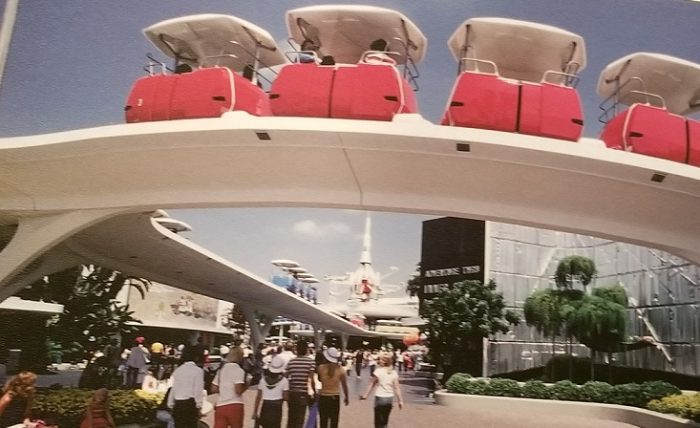
The system worked beautifully, so much so, that when an update for Disneyland’s Tomorrowland section was proposed in the mid-1960s, an attraction that would employ Gurr’s “people-mover” propulsion system was planned.
The WEDway PeopleMover debuted in Disneyland on July 2, 1967. The track was elevated, giving guests a panoramic view of the park. The attraction weaved its way over portions of the Autopia track, as well as above the waters of the submarine voyage. It even went under sections of the monorail beams.
The track also would wind its way in and out of some Tomorrowland buildings.
In 1977, a gimmick called the SuperSpeed Tunnel became an added feature along the PeopleMover track . It was located in the upper level of the former Carousel of Progress building. Race cars were projected on the walls of the tunnel all around the PeopleMover cars, giving the illusion of speed. In 1982, the projections were changed to scenes from the movie Tron and for a time, the attraction was billed as the PeopleMover Thru the World of Tron.
Despite efforts to make the PeopleMover seem faster, it remained a slow, leisurely tour, giving weary guests a chance to sit back, relax and take a break from the hustle and bustle below.
The ride vehicles [four attached cars] were propelled by electric motors that were built into the track bed, allowing them to journey along a continuous track throughout Tomorrowland.
In Disneyland, the vehicles were self-contained, with a roof atop each one; the track was elevated about 15 feet off the ground, giving you a nice overview of the surrounding areas.
When Tomorrowland was updated in the mid-1990s, it was decided that the PeopleMover had become outdated [it ran from 1967 to1995] and the ride was closed.
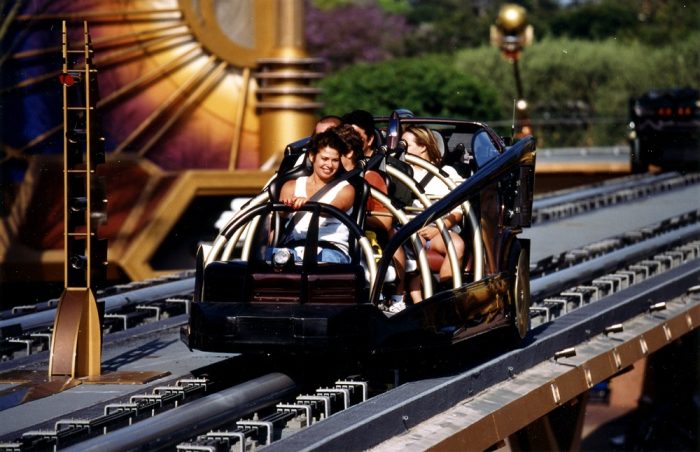
The Rocket Rods were supposed to be the cornerstone of the Tomorrowland expansion. Although lines were extremely long after the attraction opened in May of 1998, the Rocket Rods never lived up to the hype.
For one thing, there was the disjointed queue, which started outside of the old CircleVision 360 attraction. At the entrance was a sign that read: Ride the Road to Tomorrow. Turns out, it was a long and winding road.
Guests in the queue walked inside a series of rooms, where a variety of displays showed the history of transportation within Disney parks. Then guests had to climb some stairs to reach the Rocket Rods boarding area.
The open-air, futuristic ride vehicles were decidedly low-capacity. They seated five guests, with two riders in a back row, then three single-rider seats. Throughout the entire ride, you could hear an annoying, whirring sound that gave you the impression that the vehicle was straining to pick up speed.

That’s because the new Rocket Rods track was placed over the flat PeopleMover track bed and no banked curves were incorporated in the design, which meant that every time your Rocket Rod approached a curve, it needed to decelerate. The constant acceleration/deceleration of the vehicle proved to be problematic and ultimately contributed to the ride’s demise.
In addition, although the track took guests inside several buildings in Tomorrowland [Star Tours, Star Traders, Starcade and Space Mountain], for the most part, the Rocket Rods riders were exposed to the elements. Like the original PeopleMover, the Rocket Rods’ track weaved under monorail beams and over – at the time – the submarine-less Submarine Voyage lagoon.
A few weeks after the Rocket Rods opened, they were shut down for maintenance. When they reopened an astonishing three months later, little had changed in terms of the ride’s reliability. There were countless system failures and even more frustrated guests waiting in queues that went nowhere.
The Rocket Rods closed in 2000, again presumably for maintenance, but they never reopened. Without much fanfare, the ride vehicles were removed from the track and dismantled.
Curiously, the original elevated PeopleMover track remained in place.
To this day, that track and its many obtrusive support columns is still there. Regular Disneyland guests have become oblivious to them, but their presence remains one of those park conundrums that Disneyland purists can only shake their heads at.
Gurr, the former Disney Imagineer who designed the PeopleMover concept, as well as so many attractions within Disneyland’s berm, is just as puzzled as the rest of us.
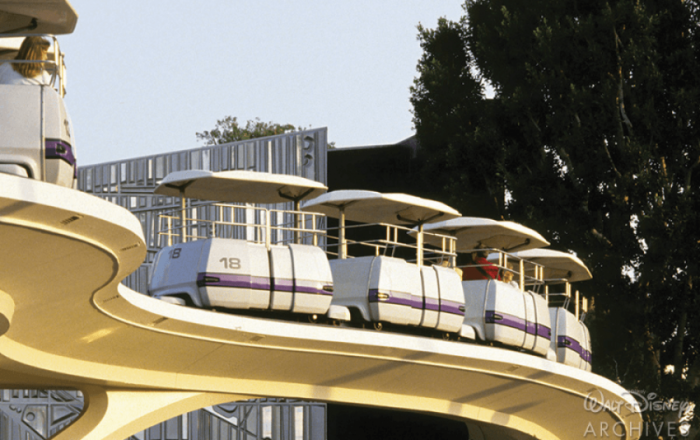
Walt Disney World’s version of the PeopleMover continues to entertain guests 47 years after opening. It’s signature line in the narration – “Paging Mr. Morrow. Mr. Tom Morrow” – is almost as iconic as “Welcome, foolish mortals” and “Yo ho, yo ho, a pirate’s life for me.”
If nothing else, the PeopleMover has offered regular riders a bird’s eye view of construction progress of the much-anticipated Tron Light Cycles attraction.
But for the rest of us, there’s no fumbling on your phone to reserve a ride time, no Genie+ or Lightning Lane to stress over. Just ride up the moving stairway, take a seat and enjoy.
Chuck Schmidt is an award-winning journalist who has covered all things Disney since 1984 in both print and on-line. He has authored or co-authored seven books on Disney, including his most recent, “The Beat Goes On,” for Theme Park Press. He also has written a twice-monthly blog for AllEars.Net, called Still Goofy About Disney, since 2015.


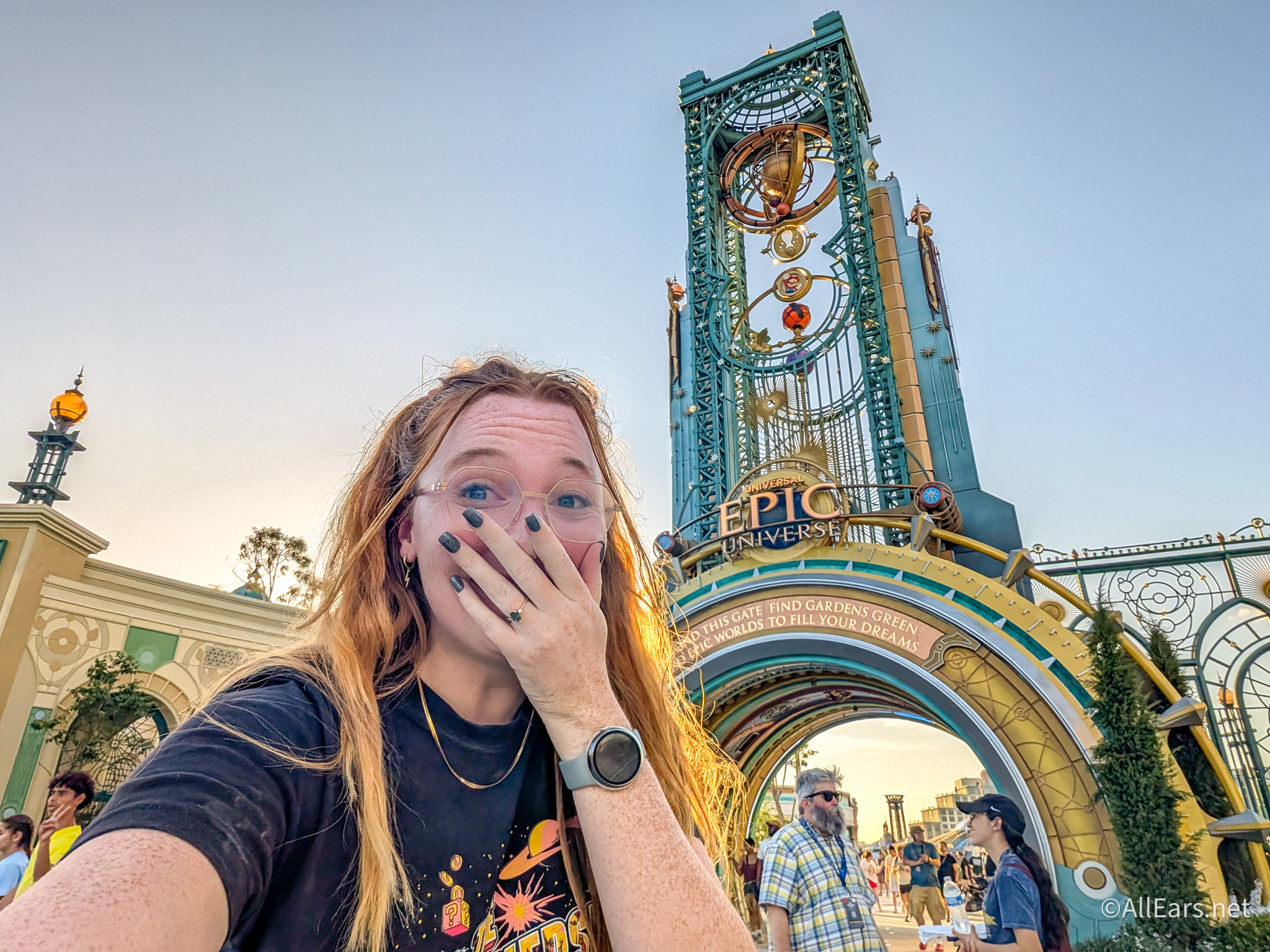

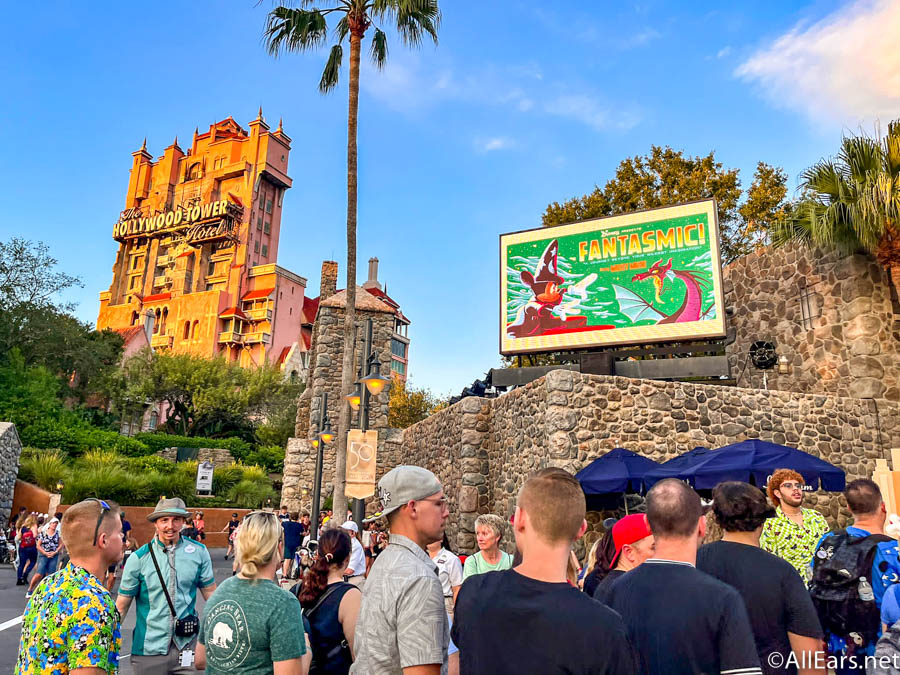
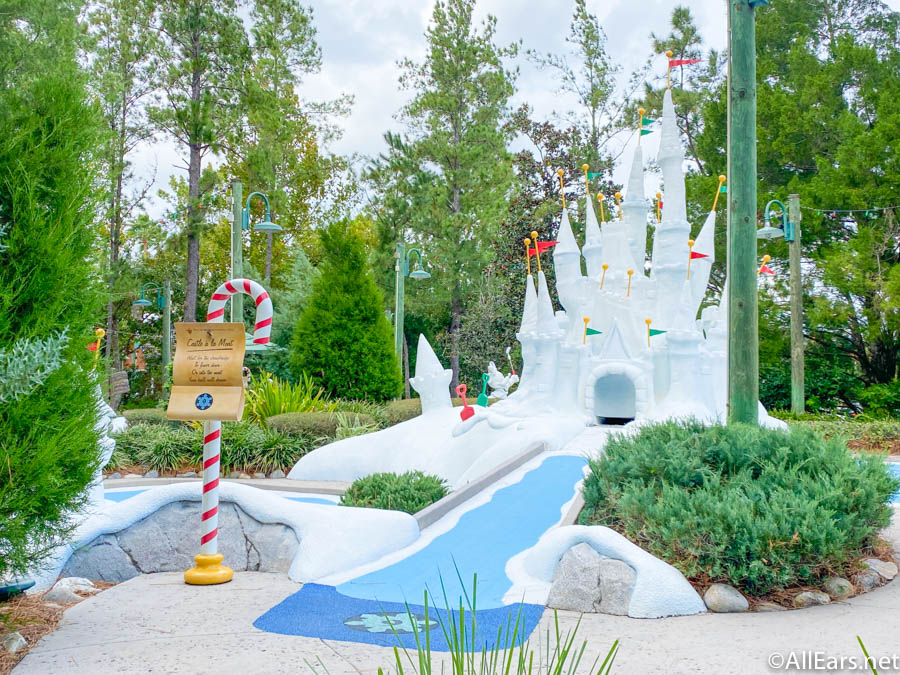







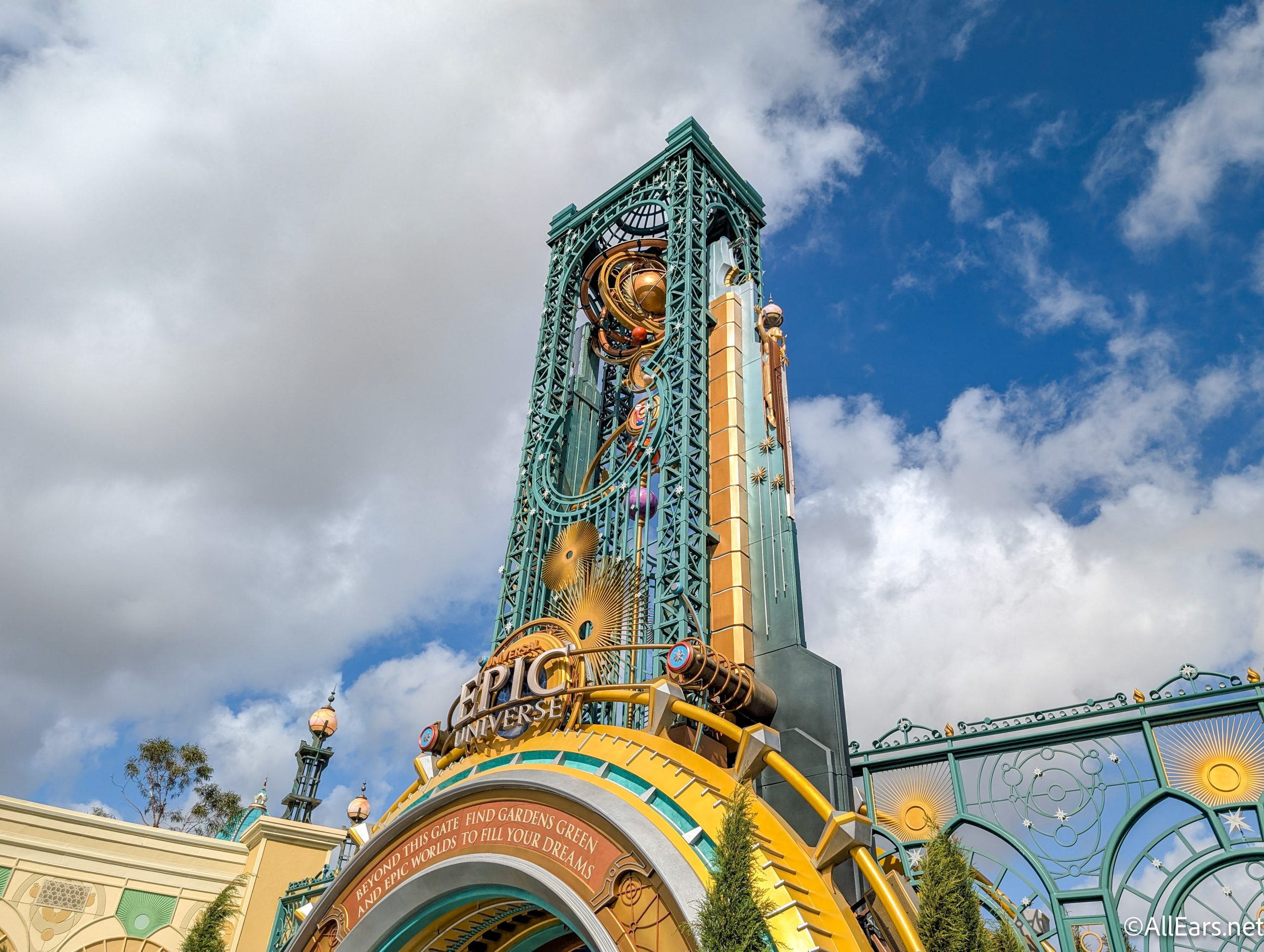



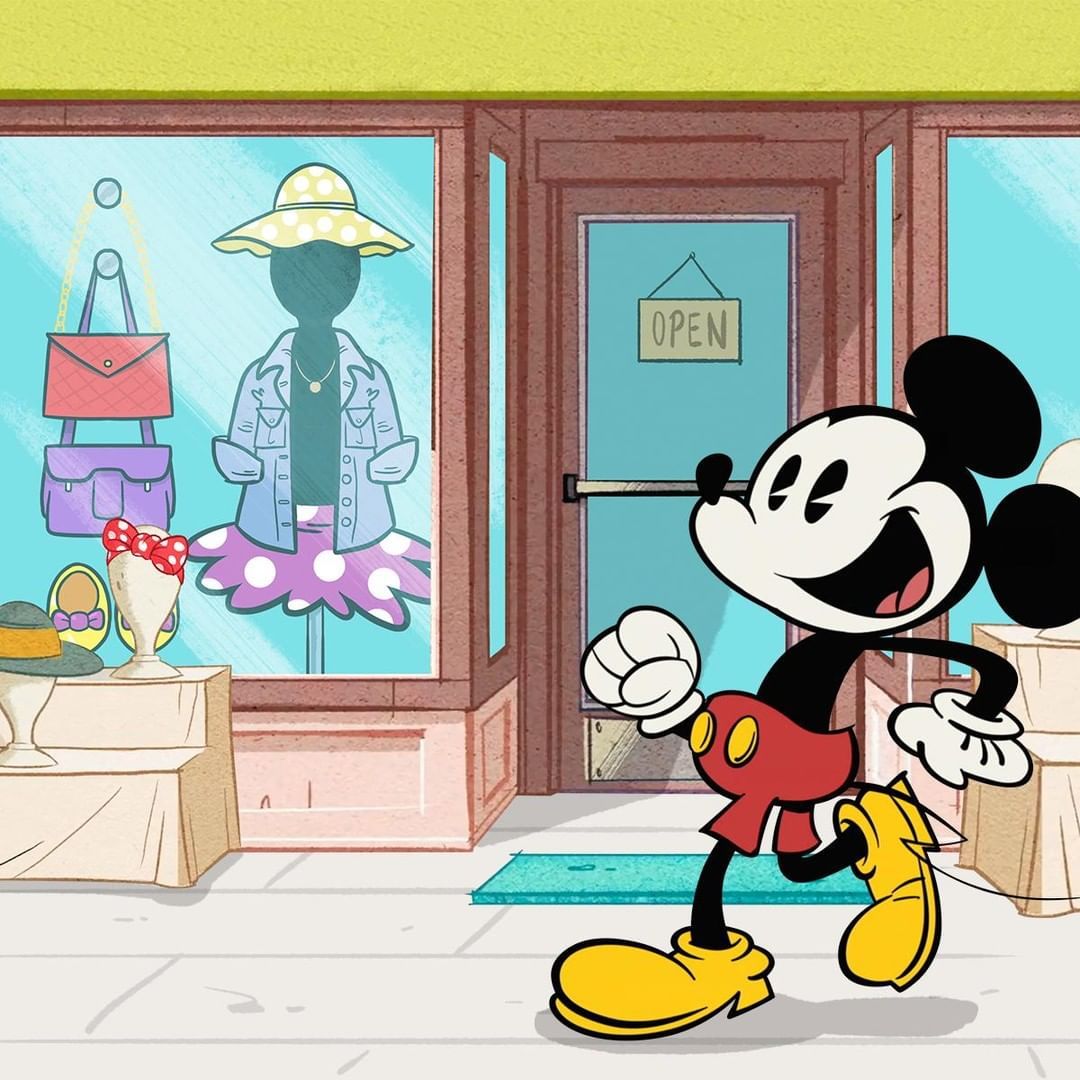
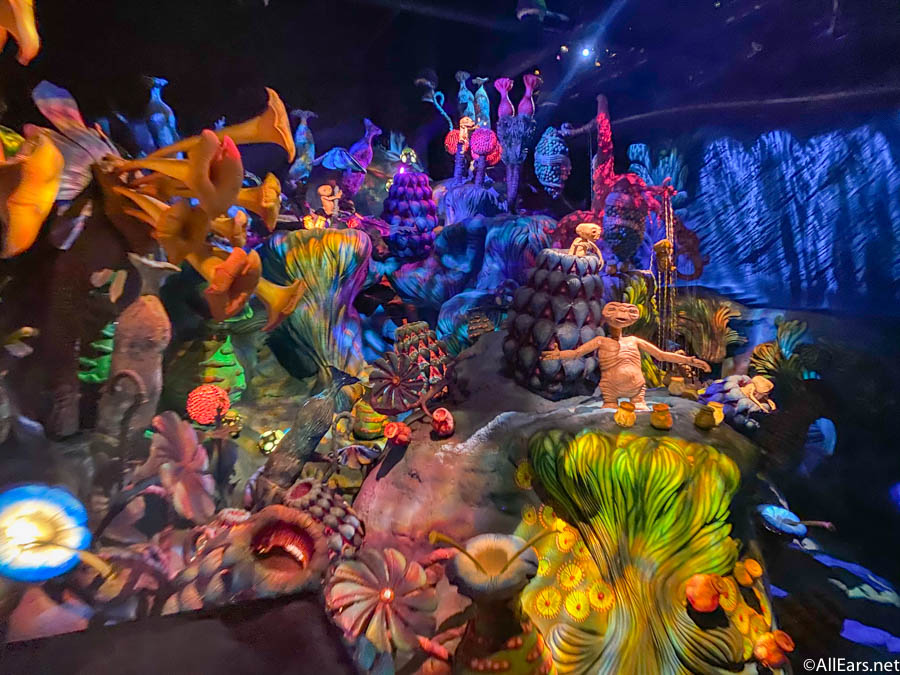

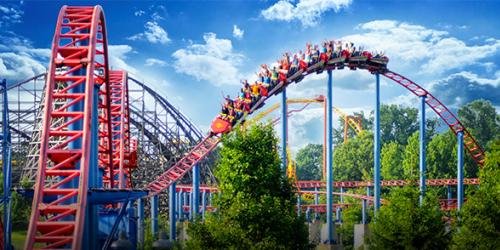


I think they were a brilliant attraction and, in fact, should be widely deployed in cities throughout the U.S. NOW to partially solve the “last mile” problem of mass transit. Can you imagine supplanting many cars on busy streets with a constantly moving system? It would be brilliant.
I’ve moved to Florida from California. I liked the Peoplemover at Disneyland because of the relaxing ride and when it went into Spacemountain they had Tron lights, etc so you didn’t feel like you were moving through inky darkness where you can’t see your hand in front of your face! This is why I don’t like this ride in Florida. I need to have some light and that blank black atmosphere makes me terrified.
Love the AllEars on YouTube!
The People Mover is just the right respite from the crowds, noise, lines, etc. I do wonder if it’s frequent shut downs are due to how much heavier the average rider is today than when the ride was first designed. I doubt the moving ramp was designed to move multiple 300LB+ bodies at once, especially when they are cluster together. Perhaps WDW should simply discontinue the moving element and have riders walk up the ramp instead. That might prevent the shut downs by discouraging extremely overweight people from riding. I never see that demographic climbing the Swiss Family Robinson Treehouse…just saying.
Sharon, the Peoplemover cars are designed for up to 4 people per car, and the system is designed for a full train of 4 or 5 occupied cars (don’t remember which it is!). When is the last time you saw it filled anywhere near this capacity, especially recently with issues with the ramp and slow loading by a smaller group of cast members? The answer is never, and heavier people who do ride simply fill up one of the seats in the car where two people might otherwise sit – they don’t add extra weight to the system overall. Whatever the reliability issue with the Peoplemover is (which I would love to see explored in an article!), it has nothing to do with “extremely overweight” people and I suspect it has much more to do with Disney cutting corners on maintenance and deciding it’s easier to take cars off the track than it is to actually maintain the ride properly. When combined with frequent breakdowns and closures, the net result are waits that often exceed 20 minutes (in Florida sun, without a covered queue!) for what used to be a wonderfully peaceful walk on ride at just about any time of the year.